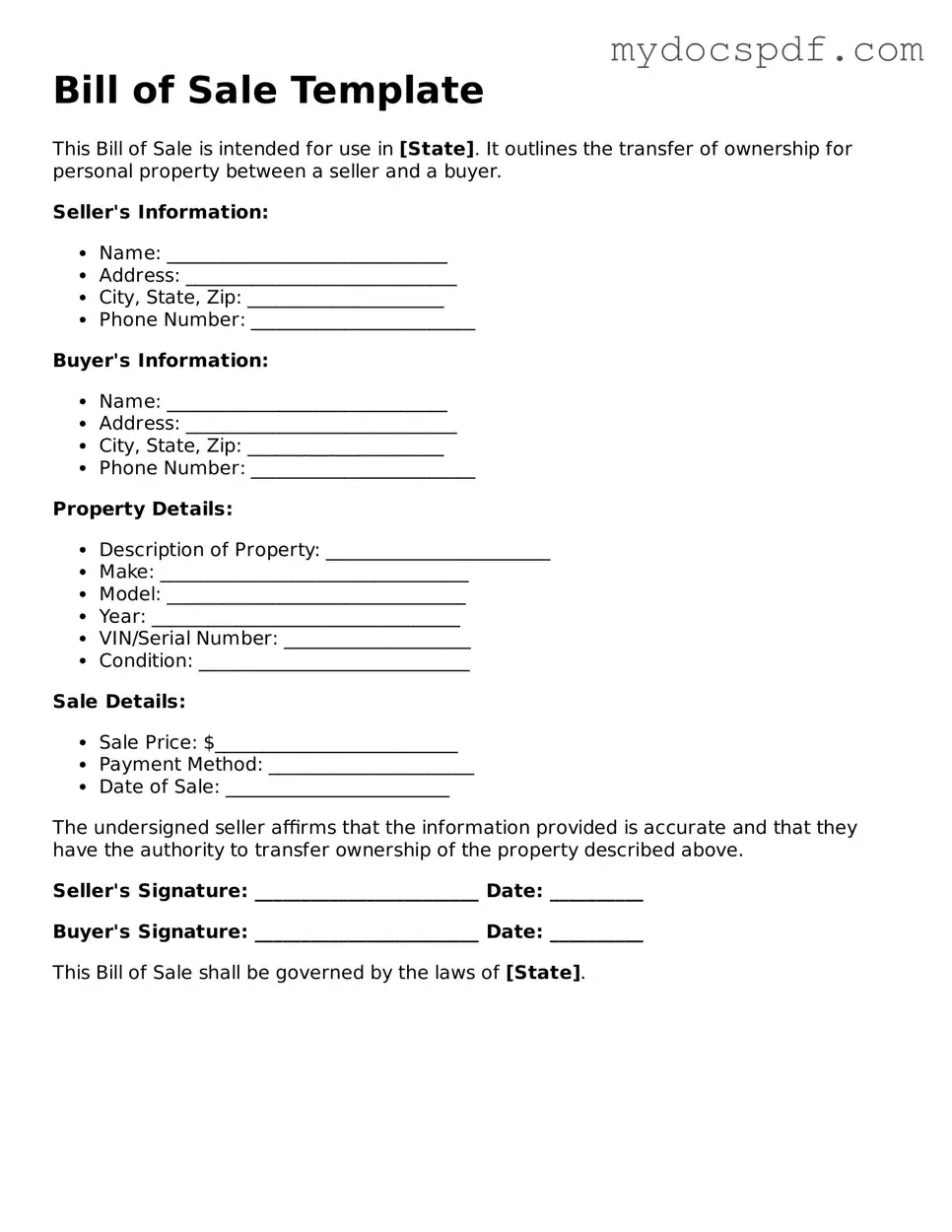The Bill of Sale form serves as a vital document in the realm of personal and commercial transactions, facilitating the transfer of ownership from one party to another. This form typically includes essential details such as the names and addresses of the buyer and seller, a description of the item being sold, and the agreed-upon purchase price. Additionally, it often contains information regarding the condition of the item, any warranties or guarantees, and the date of the transaction. By providing a clear record of the exchange, the Bill of Sale helps to protect the interests of both parties involved. It can be particularly important in transactions involving vehicles, real estate, or high-value personal property, where the stakes are higher and the potential for disputes may arise. Understanding the nuances of this form can empower individuals to engage in transactions with greater confidence, ensuring that their rights are safeguarded and that the terms of the sale are clearly articulated.
